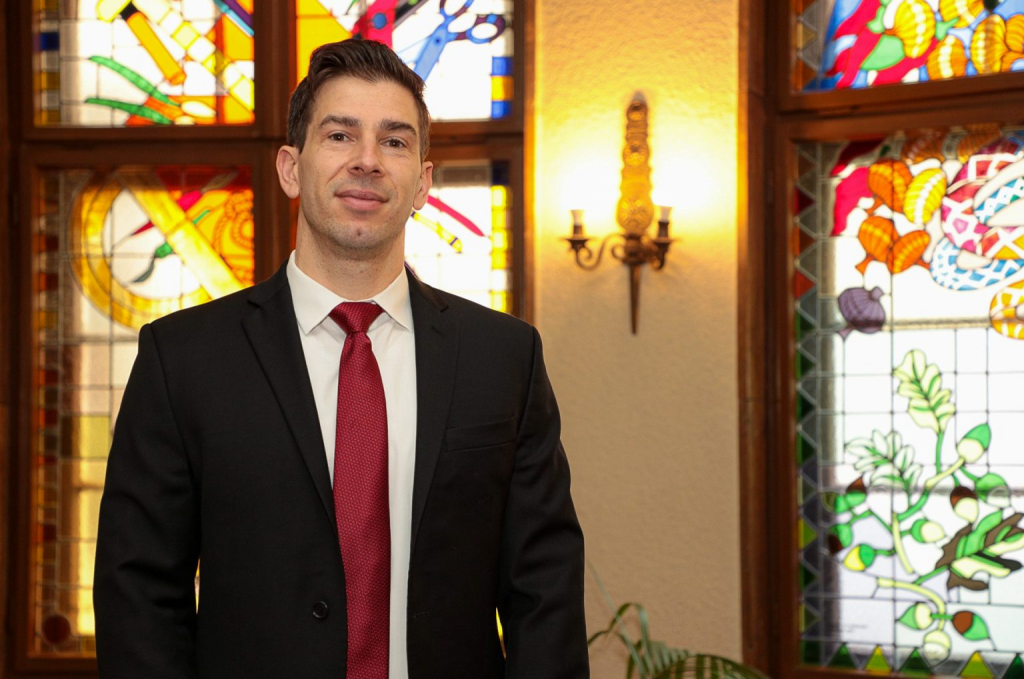
“I loved that scanning tunneling microscopy allows us to see atoms and what electrons are ‘doing’ in materials, and that my first task was to build that microscope with a team of my colleagues. Superconductors were the first topic I started researching by chance, and they remain one of my favorite topics,” says Dr. Ilija Zeljković, winner of the prestigious “Marko Jarić” award, which is sometimes called the “Serbian Nobel Prize in Physics”.
Dr. Zeljković, one of the youngest recipients of this prestigious award so far, built his scientific career in USA. After completing the Mathematical Grammar School, he went to the USA where he graduated from Washington University in St. Louis in 2007. He defended his doctoral dissertation at Harvard University in 2013 on the subject of high-temperature cuprate-based superconductors. The main results of his research were published in the leading journals Science and Nature Materials, and he continued his career at Boston College in Vidya Madhavan’s group, where he produced numerous results.
At Boston College, Dr. Zeljković established his own group dealing with the synthesis of new materials and research using scanning tunneling microscopy. “Ever since elementary school, I loved mathematics and physics,” says Dr. Zeljković. “My love for physics prevailed in high school with the help of my physics teacher Nataša Čaluković, but at that time I still didn’t know which field of physics I would pursue in the future because I was interested in many. At university, I did research in astrophysics. During my postgraduate studies, I became interested in solid state physics and scanning tunneling microscopy techniques,” he explains.
You continued your education in America, first in St. Louis, and then at Harvard after graduating from the Mathematical Grammar School. How did you adapt?
It was quite difficult to adjust In the beginning, because I left early, after finishing high school. I missed my family, friends, food, Belgrade… The most difficult thing was to use the English language in everyday speech and to find a new research company in an area where there are not many foreigners (and especially no one from Serbia).
You have investigated highly correlated cuprate-based superconducting materials that otherwise attract a lot of attention. What makes them so attractive to physicists?
The mystery of superconducting cuprates has been going on for decades. They attract attention because superconductivity in them at unusually high temperatures cannot be explained by the basic theory that explains superconductivity in “ordinary” materials that superconduct at low temperatures, such as mercury or lead. The theory of cuprate superconductivity is still debated and there is no consensus. The hope is that if we understand what makes them superconductive, we can create new materials that will be superconductors at room temperatures. Such an undertaking could lead to a new technological revolution, for example in the field of energy.
The Kagome crystal structure has been the focus of your interest in recent years. Why do materials with this crystal structure have perspective?
Kagome’s structure is fascinating. Decades ago, theory predicted that such a structure would have very unusual electrons, which could have exotic properties. The Kagome structure consists of small triangles surrounding each hexagon in the crystal lattice. As such, there are huge “holes” in the center of each hexagon, and in principle it is not easy for such to be stable in nature. In the last few years, materials in that structure have been able to be made, and this has opened the door to testing old theories. A large number of exotic properties have already been discovered in them, such as unusual superconductivity, “waves” of electrons on the surface, etc.
Favorite paper?
It’s hard for me to choose just one paper / work. Each of the dozens of papers I have published represents a special story. But if I had to pick just one, it would probably be my first paper from 2012. In that paper, I investigated how individual oxygen atoms affect superconductivity in a single cuprate. It’s also the first experiment we’ve done using the microscope we’ve been building for the past five years.
What does the Marko Jarić award means to you?
It is a great honour for me to be awarded for this prestigious award. On that side, this award completes a circle – 20 years after graduating from high school, I receive recognition for my success in physics in the country and society where I came from. I am very glad that my research “crossed” the borders and was recognized as influential in the field of solid state physics by my colleagues in Serbia. I follow the work of my colleagues in Serbia, but unfortunately I did not have the opportunity for close cooperation. I hope that with this visit to Belgrade and the Institute of Physics, we may start some new joint projects. In America, there is a strong group of people from Serbia who deal with solid state physics, and it is always a great pleasure when we see each other and hang out at conferences.
—
Author: Slobodan Bubnjević
Photo: Bojan Džodan/IPB




